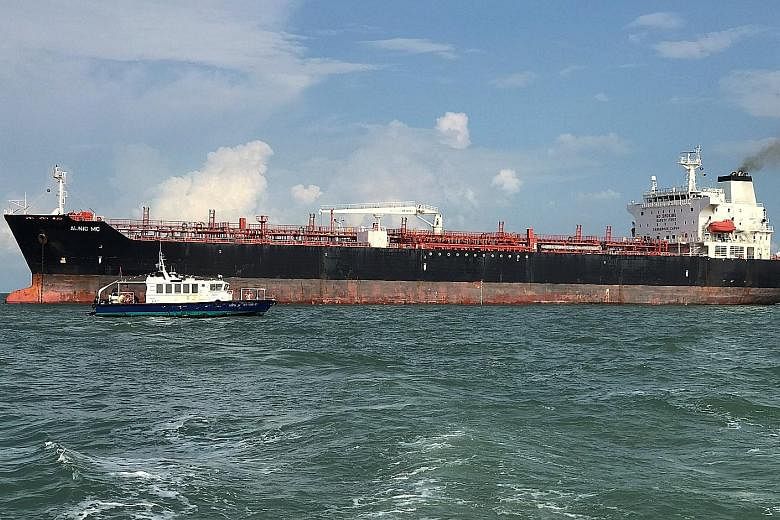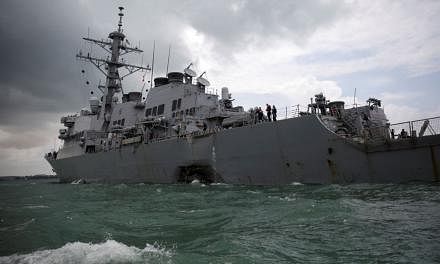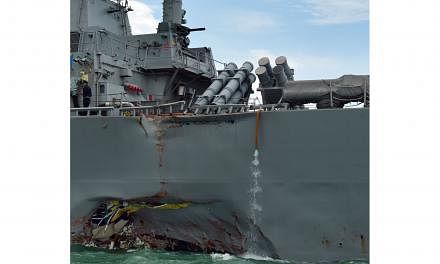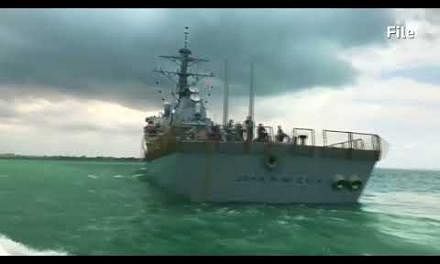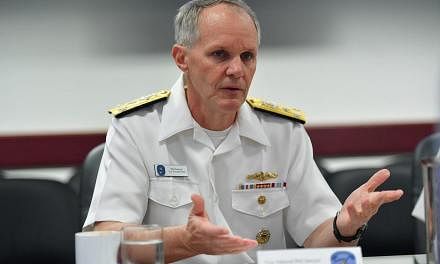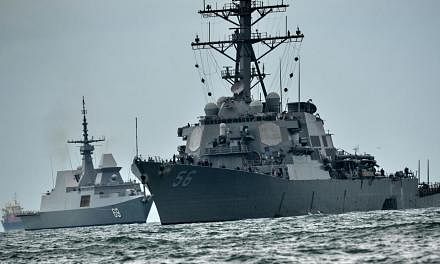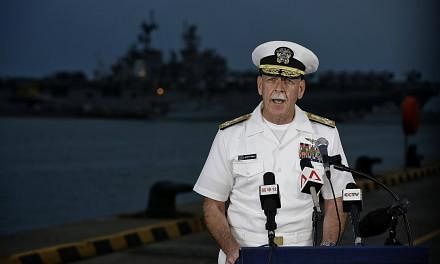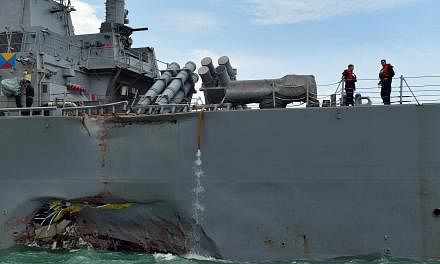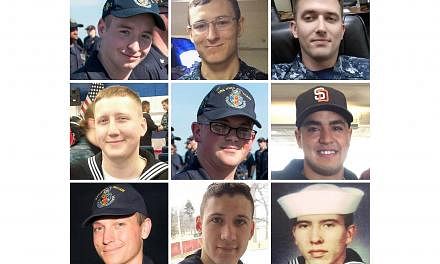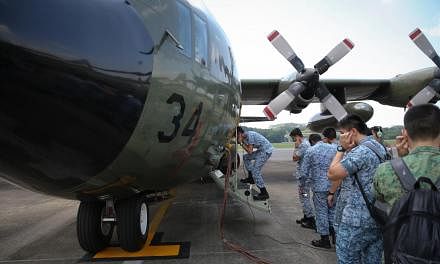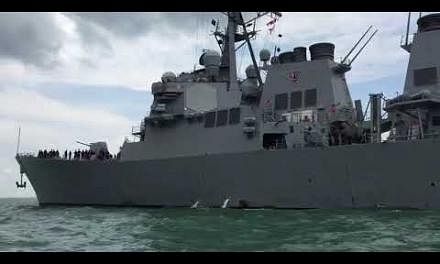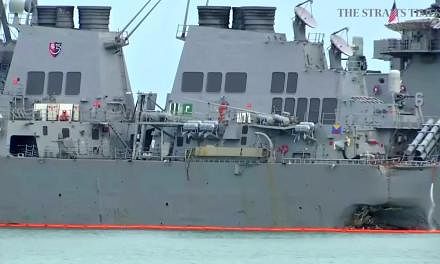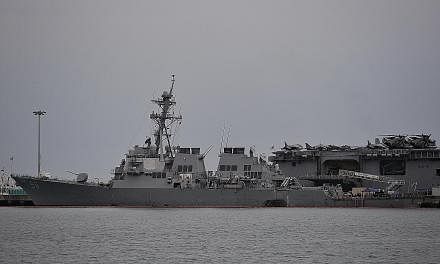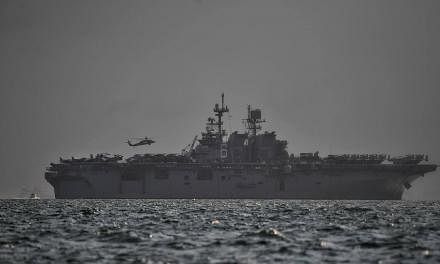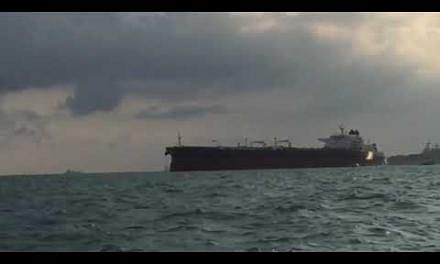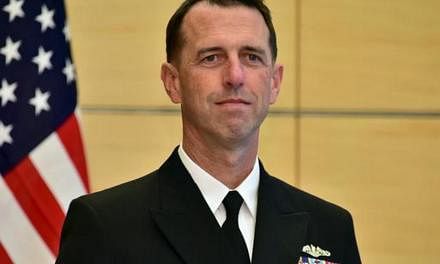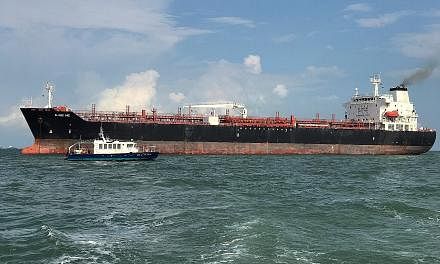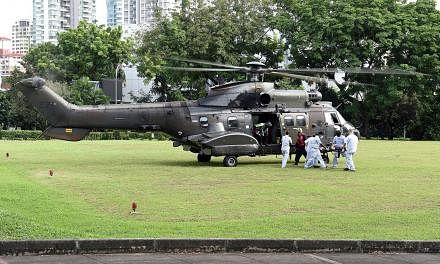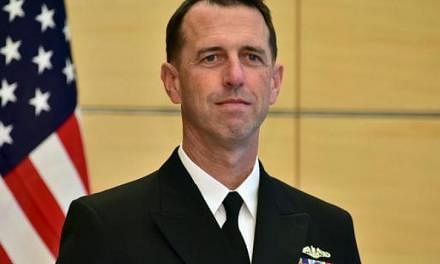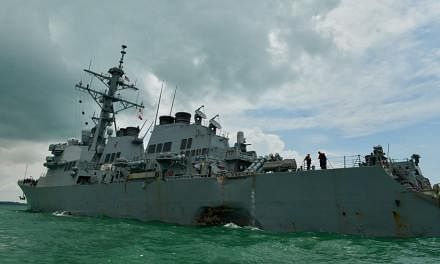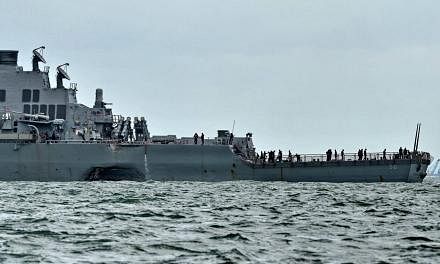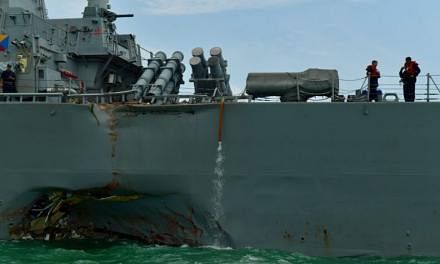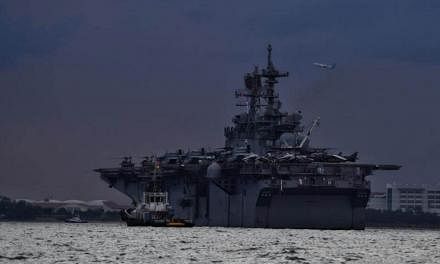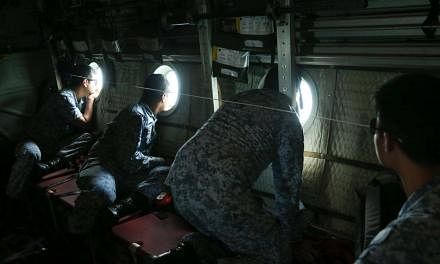Collisions between major vessels are rare, but when circumstances conspire, even the most advanced technology and anti-collision systems cannot prevent accidents, experts said.
A US warship and oil tanker collided at 5.24am yesterday in the Singapore Strait, sparking a massive search for 10 US sailors who are still missing at sea. The accident also raised questions on how vessels equipped with sophisticated technology were unable to avert the mishap.
Maritime expert Collin Koh of the S. Rajaratnam School of International Studies at the Nanyang Technological University said a ship like the the US guided-missile destroyer USS John S. McCain would have not just the primary air and surface surveillance and fire control radar systems, but also the usual navigational radar system.
The Liberian-flagged merchant vessel Alnic would have been similarly equipped with monitoring systems, other experts said.
The Straits Times understands that the Maritime and Port Authority of Singapore (MPA) also has a monitoring system for vessels entering the Singapore Strait.
It is unclear if the system had detected a potential collision. Human error also cannot be ruled out.
Mr Koh noted though that the usual procedure is for crew to not just rely on radars, but also on lookouts who scan the various areas, especially blind spots, for any potential collision hazards nearby.
A spokesman for the London-based International Maritime Bureau (IMB) told The Straits Times that navigating through the Singapore Strait - one of the busiest sea lanes in the world - is challenging, even for experienced crew. Even during the early hours, the area is busy with vessels of various sizes, from small trawler and medium-sized coastal tankers to supertankers.
Mr Koh said: "At such hours when it is about first light, the crew will still need to exercise caution since the visibility may not be all clear."
Experts added that even when a collision is known to be imminent, it is not always possible for a disaster to be averted, especially when big ships are involved.
The IMB spokesman said: "There are many variables at play here, including the size of a ship, how fast it is going, how deep it is and the flow of the currents. It can take a considerable amount of time for a ship to come to a stop."
The investigations, being led by the MPA, will look into all these factors, including whether the crew on board both vessels were aware that a collision was imminent.
This was the second accident involving the US Navy's 7th Fleet in recent months.
In June, seven sailors died when the USS Fitzgerald collided with a container ship off Japan. The US vessel's captain was stripped of his command after the navy found that flaws in keeping watch could have contributed to the accident, it has been reported.

Karamjit Kaur and Lim Min Zhang
